If you do any online research on healthy eating, I’m sure you’ve run into numerous articles about the value of eating fermented food.
What is fermentation, anyway? Fermentation is a process that humans have used since ancient times to preserve food. Basically, it’s a process of using bacteria or yeast (microorganisms of some kind) to break down carbohydrates to alcohol or organic acids without exposing the food to air. You may be more familiar with the production of wine and beer than with the production of food. Fermentation changes the original food and extends its shelf life considerably
The reason why fermented food is so popular right now is that it’s thought they are good for our health. Fermented food contains natural probiotics which our bodies need.
Probiotics
Probiotics are microorganisms that our intestinal tract need. Our intestines are full of bacteria and other microorganisms; this is called the microbiome. Probiotics help boost the number of beneficial bacteria found in our gut.
Increasing the good bacteria is thought to provide a number of benefits to our body and health. These include, weight loss, improved digestive health, Improve allergy symptoms and skin issues, elevate our mood, and help with cholesterol levels. When you start reading, it seems that probiotics solve all of our problems, at least health-related ones.
So, if you eat fermented food, you’re getting naturally created probiotics. And because there are different kinds of fermented food, you get different types of bacteria and vitamins, depending on what you eat.
Fermented Food
I recently read a doctor’s advice in a forum on dementia and Alzheimer’s. He recommends eating fermented food with every meal. I guess if I expand the number of fermented food that I have available in my kitchen, I might be able to do that though it sounds challenging to me.
When you start to look around on the internet about fermented food, you’ll see lots of recipes about how to make your own. I haven’t tried this because I feel nervous about it. Some of the recipes sound pretty easy so I’m not sure why they make me nervous. I think I need to invite someone over to try making some of these things with me.
If you decide to ferment food at home, be sure to use glass or crockery. Don’t use plastic containers for the fermentation. The plastic doesn’t work well apparently, and food poisoning can become an issue.
What are some of the fermented foods we should be eating? I gather just about anything can be fermented but here are some of the most popular. This is not an inclusive list by any means.
Sauerkraut:
This is a traditional fermented cabbage dish. It is especially associated with Germany though apparently sauerkraut is a popular dish in many countries. If you’re going to buy sauerkraut for its probiotics, be aware that you want to make sure that the sauerkraut you buy has the probiotics.
Don’t buy sauerkraut that has been pasteurized. A lot of the sauerkraut sold on the grocery store shelves is pasteurized which kills the beneficial bacteria. That, of course, is the point of pasteurization. Refrigerated sauerkraut is usually a good bet but be sure to check the label. You can see the words “100% naturally fermented” on this picture.
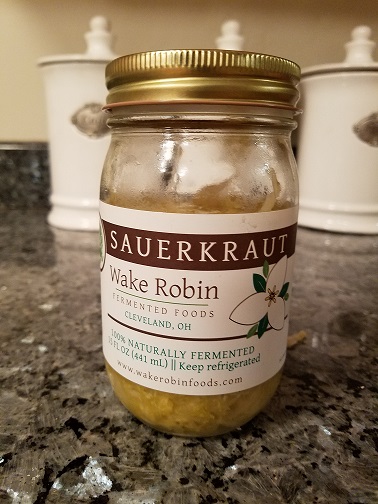
You probably also don’t want to buy sauerkraut that has had preservatives or extra sugar added to it.
Kimchi
Kimchi is a Korean side dish that, like sauerkraut, is made from fermented cabbage. It can be made from other vegetables, such as radishes, but napa cabbage is the traditional ingredient. Kimchi is made with a variety of spices that may include chili powder, red pepper, garlic, and ginger. All kimchi that I have tried has been spicy but I gather it can be mild too.
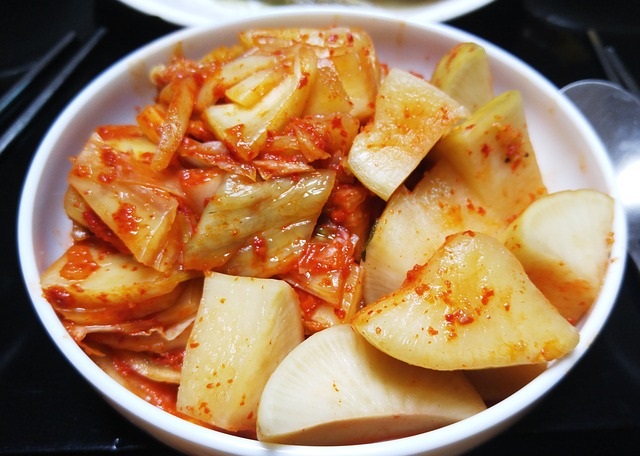
Pickles and Fermented Vegetables
Most pickles that we buy in the grocery store are not fermented. They’re preserved in vinegar. If you want pickles that are actually fermented and so have the probiotics that we’re looking for, go to the refrigerator section and look there. The jar should say that it’s fermented or a source of probiotic or has live cultures.
We think of pickles as being cucumbers but you can get other vegetables as well. There’s a local company that makes fermented foods that sells fermented green beans, carrots, and a mixture of beets and apples.

I did see some recipes online for fermented apples and for fermented berries. I bet that would be good.
Miso
Miso is fermented soybeans. It’s a traditional ingredient in Japanese food. You can buy the miso paste at many grocery stores. Probably the most common way to eat miso is in soup. Miso soup is made by stirring the miso paste into broth. You can add other ingredients if you want.
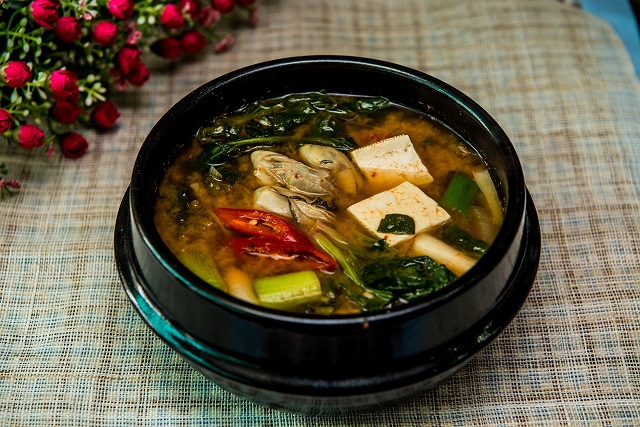
I have seen recipes for salad dressings, marinades for meat, and sauces for vegetables that include miso.
I have never seen a recipe for making your own miso so I think I can happily stick to buying it in the store.
Kombucha
Kombucha is a great fermented food. I hear that it’s easy to make but as I said earlier, I’ve never tried to make any of these foods. You can buy kombucha at many grocery stores even though it’s expensive that way. I suspect that this is like buying popcorn. It’s so much cheaper to pop your own at home. You can’t get it everywhere, though. One time I called my son in North Carolina and asked him to buy me some kombucha for my ride home from South Carolina because I couldn’t find any in the local stores.
I don’t drink soda pop any more and kombucha is about the closest I get to it these days. That’s why I wanted to have some in the car.
Kombucha is basically sugar and green or black tea that ferments. Usually, some kind of fruit or flavoring is added to it to make it a flavorful, bubbly drink. Be aware that kombucha is usually tart.
When kombucha is made, there is a clump that forms, similar to what you find in unpasteurized apple cider vinegar. This is call a SCOBY (symbiotic colony of bacteria and yeast) and can be used to start your next back of kombucha.

Kefir
Kefir is similar to yogurt but is drinkable. It’s basically fermented milk. Kefir grains, which are a combination of yeast and bacteria, are added to milk. The resulting beverage is thicker and tangier than milk.
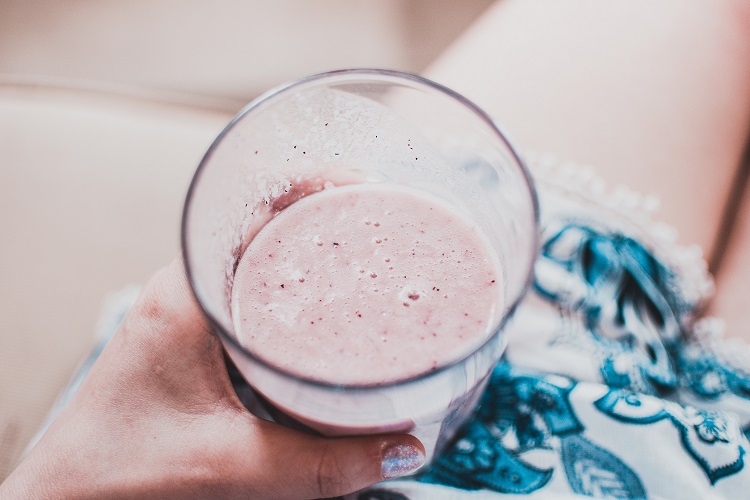
You can find kefir in most grocery stores now. I buy the plain kefir to avoid the sugar and flavorings added to the fruit flavored kefir. I then throw it in my blender with some fruit and make my own, unsweetened kefir to drink.
Kefir can easily be added to smoothies as well.
There’s apparently some evidence that kefir helps strengthen bones.
If you avoid dairy, you’ll have to decide if kefir is for you or not. I’ve read some articles that say even if you’re avoiding dairy, kefir and yogurt are ok.
Yogurt
Go into any grocery store and look in the dairy section. There’s now so much yogurt and in so many varieties, it’s overwhelming. Because the selection of yogurt is so big, make sure that what you’re buying actually has live cultures. That’s the only way you’ll get the probiotics.
Like kefir, yogurt is made from fermented milk. You probably want to avoid the yogurts that have lots of sugar added to it. I tend to buy plain yogurt and add fruit and flavorings to it so that I have control of what’s in it.
There have been a few studies that suggest that yogurt helps you to lose weight. I don’t know if that’s true but it might be worth trying.

Make Your Own
If you make your own fermented food, please let me know and maybe share some photos. I really need some moral support on this one. I have the glass jars though I was tempted to buy a crock recently but then decided I should make something with the jars before I spend money on a crock.
If I become bold enough and decide to ferment something, I’ll be sure to take photos and I’ll post them for you to see.
Let me know which of these you eat or avoid and what fermented foods I overlooked.
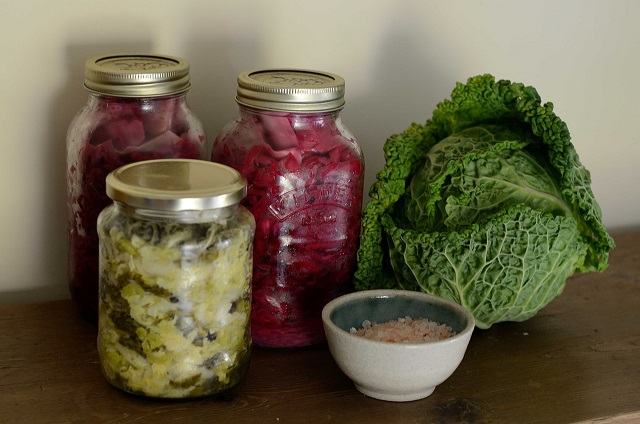
3 thoughts on “Fermented Food for a Healthy Gut”